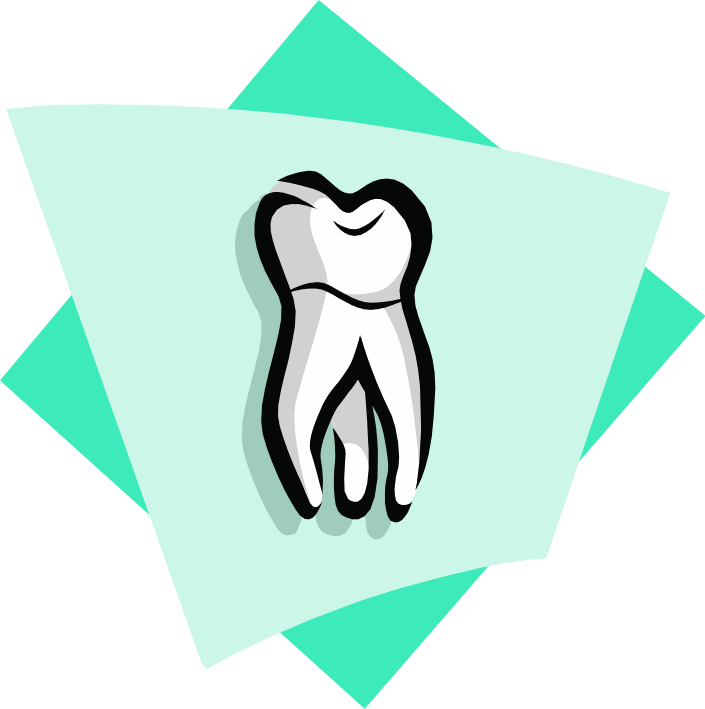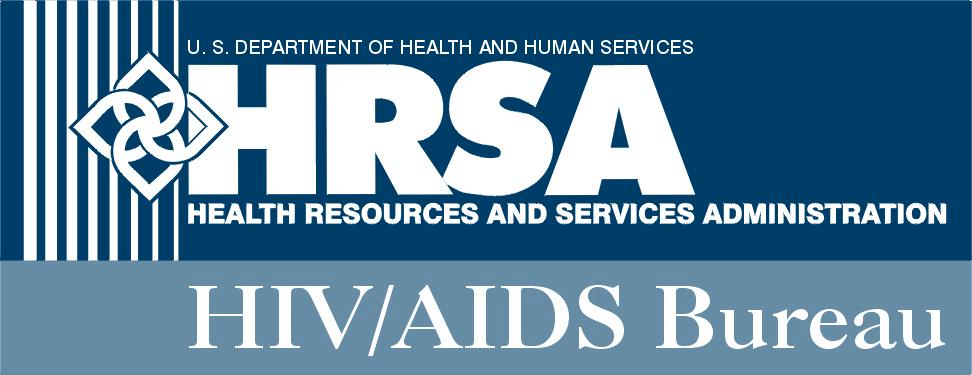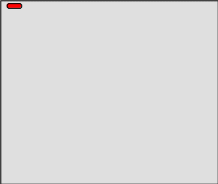Form dental 1 dental 1 dental
Ryan White CARE Act Dental Reimbursement Program
0151 dental report
Ryan White CARE Act Dental Reimbursement Program
OMB: 0915-0151
OMB No. 0915-0151
Expires: June 30, 2008
T HE
RYAN HIV/AIDS PROGRAM
HE
RYAN HIV/AIDS PROGRAM
DENTAL SERVICES REPORT
Public Burden Statement: An agency may not conduct or sponsor, and a person is not required to respond to, a collection of information unless it displays a valid OMB control number. The valid OMB control number for this information collection is 0915-0151. Public reporting burden for this collection of information is estimated to average 20 hours per response, including the time to review instructions, search existing data resources, gather the data needed, and complete and review the information. Send comments regarding this burden estimate or any other aspect of this collection of information, including suggestions for reducing the burden to: HRSA Clearance Officer, Room 10-33, 5600 Fishers Lane, Rockville, MD., 20857.

Division of Community-Based Programs
HIV/AIDS Bureau
Health Resources and Services Administration
Parklawn Building, Room 7A-30
5600 Fishers Lane
Rockville, Maryland 20857
This page intentionally left blank.
Please refer to the Dental Services Report Instructions for a description of each section and item.
All Part F Dental programs must complete Sections 1 through 4. If you are applying for Dental Reimbursement Program (DRP) funding, continue to Section 5. If you are submitting the annual data report for the Community-Based Dental Partnership Program (CBDPP), complete Section 6 instead of Section 5.
Section 1. Institution/Program and Contact Information
Institution/program information:
Organization
Address
City
State ZIP Code
Nine-digit Federal tax ID # □ □ - □ □ □ □ □ □ □ D-U-N-S number: □ □ - □ □ □- □ □ □ □
Institution/program Web site address:
Is the institution in #1 using this Report to (select only one):
Apply for funds through the Dental Reimbursement Program (DRP)? (Complete Sections 1 through 5)
Submit data for the Community-Based Dental Partnership Program (CBDPP)? (Complete Sections 1 through 4 and 6)
Type of institution/program submitting this Report (select only one):
Accredited predoctoral dental education program—School of Dentistry
Accredited postdoctoral dental education program—School of Dentistry, Hospital, Health Center or Other
Accredited dental hygiene education program
Program contact person (dentist or dental hygienist) most closely connected to the provision of services covered by this Report:
Program Contact Person: This individual will be notified of funding and will be considered the primary contact person for all Dental Program communications.
Name
Title/Position
Address (if different from address in #1)
City
State ZIP Code
Telephone: (__ __ __) __ __ __-__ __ __ __
Fax: (__ __ __) __ __ __-__ __ __ __
Pager: (__ __ __) __ __ __-__ __ __ __
E-mail address:
Check this box if the program contact person in #4 would like to receive bimonthly updates from the HIV/AIDS Bureau on technical assistance and primary care related to the Ryan White HIV/AIDS Program.
Bimonthly updates are distributed by email ONLY; therefore, you must specify an e-mail address in #4.
Alternate program contact person (this individual will be contacted if the person identified in #4 cannot be reached):
Name
Title/Position
Address (if different from address in #1)
City
State ZIP Code
Telephone: (__ __ __) __ __ __-__ __ __ __
Fax: (__ __ __) __ __ __-__ __ __ __
Pager: (__ __ __) __ __ __-__ __ __ __
E-mail address:
Contact person (if different from #4) responsible for verifying and submitting data contained in this Dental Services Report:
The data you provide in this Report, as part of your
Federally-supported program, are subject to audit.
Name
Title/Position
Address (if different from address in #1)
City
State ZIP Code
T
 elephone: (__
__ __) __ __ __-__ __ __ __
elephone: (__
__ __) __ __ __-__ __ __ __
Fax: (__ __ __) __ __ __-__ __ __ __
Pager: (__ __ __) __ __ __-__ __ __ __
E-mail address:
Section 2. Patient Demographics AND ORAL HEALTH SERVICES
Note: Throughout this Report, all references to “your program” refer to aggregate data from your institution/program including all your partners or sites, if applicable. Avoid reporting in the “Unknown” category whenever possible.
8a. Total number of unduplicated patients with HIV treated by
students, residents, faculty, and other dental staff of your
program:
|
8b. Of the number of patients reported in #8a, how many were seen
by your program for the first time during the period covered by this
Report?
|
Please show the HIV/AIDS status of the patients reported in #8a (as of the first visit in the period covered by this Report):
HIV/AIDS Status |
Number of Patients |
HIV-positive, not AIDS |
|
CDC-defined AIDS (HIV-positive with AIDS-defining illness) |
|
HIV-positive, AIDS status unknown |
|
Total |
|
Of the number of patients reported in #8a, indicate the number by gender:
Gender
Number of Patients with HIV
Male
Female
Transgender
Unknown/unreported
Total
Of the number of female patients with HIV reported in #10, indicate the number by pregnancy status:
-
Pregnancy Status
Number of Female Patients with HIV
Pregnant
Not pregnant
Unsure if pregnant
Unknown/unreported
Total
If unknown/unreported, explain why: ____________
_________________________________________
12a. Of the number of patients reported in #8a, indicate the number by ethnicity:
-
Ethnicity
Number of Patients with HIV
Hispanic or Latino/a
Non-Hispanic or Latino/a
Total
12b. Of the number of patients reported in #8a, indicate the number by race:
-
Race
Number of Patients with HIV
White
Black or African American
Asian
Native Hawaiian or Other Pacific Islander
American Indian or Alaska Native
More than one race
Total
Of the number of patients reported in #8a, indicate the number by age:
-
Age
Number of Patients with HIV
12 or younger
13–24
25–44
45–64
65 or older
Unknown/unreported
Total
Of the number of patients reported in #8a, indicate the number by household income:
Income
Number of Patients with HIV
Equal to or below the Federal poverty line
101–200% of Federal poverty line
201–300% of Federal poverty line
> 300% of Federal poverty line
Unknown/unreported
Total
Indicate the total number of visits made by patients reported in #8a for each type of oral health service:
-
Type of Service
Number of Visits
Diagnostic
Preventive
Oral health education/health promotion
Nutrition counseling
Tobacco prevention/cessation
Oral medicine/oral pathology
Restorative
Periodontic
Prosthodontic
Oral and maxillofacial surgery
Endodontic
Anesthesia/sedation/nitrous oxide analgesia/palliative care
Emerg0ency services
Other (specify: ____________
________________________)
Of the number of patients reported in #8a, please show where they received their primary medical care by each of the following locations:
-
Location of Primary Medical Care
Number of Patients with HIV
Provider or clinic co-located in the same physical facility or site where oral health care is provided
Provider or clinic in the same institution providing oral health care, but at a different site
Other medical provider or clinic not in the same institution providing oral health care, at a different site
Unknown/unreported
Total
SECTION 3. FUNDING and PAYMENT COVERAGE
17a. Did the parent institution of the program identified in #1 receive any other Ryan White HIV/AIDS Program funding (not only for oral health care or training) during the period covered by this Report?
Yes (go to #17b)
No (go to #18)
17b. Indicate the total funds the parent institution of the
program identified in #1 received from other Ryan White HIV/AIDS
Program grants to provide any HIV-related services or training
during the period covered by this Report (rounded to the
nearest dollar):
Ryan White Program Part |
Amount Received |
Part A |
|
Part B |
|
Part C |
|
Part D |
|
Special Projects of National Significance (SPNS) |
|
AIDS Education and Training Centers (AETCs) |
|
Of the number of patients reported in #8a, indicate the number whose third party coverage for oral health services fell under each of the following categories:
Third Party Payor Coverage |
Number of Patients with HIV |
Number of patients who received oral health care with NO third party payor coverage |
|
Number of patients who received oral health care with PARTIAL third party payor coverage |
|
Number of patients whose third party payor coverage status was UNKNOWN |
|
Indicate the number of patients with HIV whose oral health care was partially covered by each of the following sources and the total amount of payment received (rounded to the nearest dollar):
Payment Source |
Number of Patients with HIV |
Payment Received ($) |
Medicaid (non-HMO/ non‑managed care) |
|
|
Medicaid (HMO/managed care) |
|
|
Medicare |
|
|
Other public insurance (e.g., TRICARE, VA) |
|
|
Private insurance, including HMO/managed care |
|
|
Self-pay or cash |
|
|
Other (specify: ________ ___________________) |
|
|
Unknown |
|
|
Section 4. Staffing and Training
For the period covered by this Report, provide the following information about the number of dental students, residents, dental hygiene students, and other non-student dental providers who participated in or rotated through your program. Please feel free to attach an optional narrative description of your HIV training program as further clarification of the information that you provide below.
|
Predoctoral |
Dental |
Dental |
Other |
a. The total number of students and residents who were enrolled in all years of your school or program |
|
|
|
|
b. The total number of students, residents, and other providers who received formal didactic instruction in medical assessment or oral health management for patients with HIV |
|
|
|
|
c. The total number of students, residents, and other providers who gained experience providing direct clinical services for patients with HIV |
|
|
|
|
d. The total number of hours of your training curriculum (didactic and clinical combined) that were dedicated to issues related to medical assessment or oral health management for patients with HIV i. As part of required curriculum |
|
|
|
|
ii. As part of elective curriculum |
ii. _______ |
ii. _______ |
ii. _______ |
ii. ________ |
e. The total number of hours that all students, residents, and other providers spent providing direct clinical services for patients with HIV |
|
|
|
|
Continue with Section 5 if you are applying for DRP funding.
Otherwise, skip to Section 6 if you are submitting an annual CBDPP
data report.
Section 5. ADDITIONAL Dental Reimbursement Program Information
Person authorized to sign for the institution:
Name
Title/Position
Address (if different from address in #1)
City
State ZIP Code
Signature
A. Use of Funding
Specify how the Dental Reimbursement funds will be used within your predoctoral dental/postdoctoral dental/dental hygiene education program (check all that apply):
Direct patient services (e.g., provider/faculty salaries)
Patient education or outreach
Curriculum development
Student education/training
Staff education/training
Clinic staff salary/support
Equipment/instruments/supplies/materials
Pharmaceuticals or dental medicaments
General operations
Other (specify:_________________________)
B. UnreimburseD COSTS
23a. Total unreimbursed costs of oral health care provided to patients with HIV (rounded to the nearest dollar):
$ |
Submit responses to #23b through #28 as
separate
attachments.
23b. As a separate attachment, please provide a concise description of the methods used to calculate the amount reported in #23a.
C. NarrativeS
Site Descriptions
List and concisely describe the sites where your predoctoral dental/postdoctoral dental/dental hygiene education program provides oral health services to patients with HIV. In identifying these sites, please address the following questions:
Do your students or residents provide direct patient care in community-based facilities?
Are such facilities organizational components of your institution, or are they separate organizations?
Working Relationships with Ryan White HIV/AIDS Programs
Concisely describe working relationships that your predoctoral dental/postdoctoral dental/dental hygiene education program has established with the Ryan White HIV/AIDS Programs listed in item #17b, including Part A HIV Planning Councils and Part B HIV Consortia. Describe how your program has been working to maximize coordination, integration, and effective linkages among local Ryan White HIV/AIDS Programs.
Development of the Statewide Coordinated Statement of Need
Concisely describe how your predoctoral dental/postdoctoral dental/dental hygiene education program has been involved in the development and updating of the Statewide Coordinated Statement of Need (SCSN) in your state.
Outreach
Concisely describe any additional ways your predoctoral dental/postdoctoral dental/dental hygiene education program conducts outreach to persons with HIV to increase their awareness of the availability of oral health services, or builds community links with program managers and providers working with this population.
Special Strengths or Unique Capabilities
Concisely describe any special strengths or unique capabilities of your predoctoral dental/postdoctoral dental/dental hygiene education program in providing oral health care for patients with HIV (e.g., facilities, hours of operation, support services, or staff skills or expertise). Responses might include information regarding evening and weekend clinic hours, onsite participation in clinical trials, provider or staff diversity, special patient education programs, the availability of childcare services, language translation services, transportation services, or other special strengths.
Section 6 should be completed
only by CBDPP grantees.
Section 6. ADDITIONAL Community-Based Dental Partnership Program Information
List the names and addresses of the member organizations of your Community-Based Dental Partnership Program (other than your institution) and their roles or function in the partnership.
Name of Partner Organization |
Contact Information |
Does partner receive CBDPP funds? |
Brief Description of Partner’s Role or Function |
|
Street: __________________________________ City: ____________________________________ State: ____________, ZIP __________________ Phone:__________________________________ Fax:____________________________________ Contact Person___________________________ Contact Email Address:_____________________ |
Yes No |
|
|
Street: __________________________________ City: ____________________________________ State: ____________, ZIP __________________ Phone:__________________________________ Fax:____________________________________ Contact Person___________________________ Contact Email Address:____________________ |
Yes No |
|
|
Street: __________________________________ City: ____________________________________ State: ____________, ZIP __________________ Phone:__________________________________ Fax:____________________________________ Contact Person___________________________ Contact Email Address:____________________ |
Yes No |
|
|
Street: __________________________________ City: ____________________________________ State: ____________, ZIP __________________ Phone:__________________________________ Fax:____________________________________ Contact Person___________________________ Contact Email Address:____________________ |
Yes No |
|
If space for more partners is needed, please copy this page and complete as many boxes as needed.
Indicate which of the following populations were specially targeted to receive services through the
Community-Based Partnership Program (check all that apply):
Urban populations
Suburban populations
Rural populations other than migrant or seasonal workers
Migrant or seasonal workers
Runaway or street youth
Gay, lesbian, bisexual, transgender youth
Gay, lesbian, bisexual, transgender adults
Homeless persons
Incarcerated persons
Paroled persons
Substance addicted persons
Other, specify: _________________________________
| File Type | application/msword |
| File Title | nod |
| Author | Ruth Steenburg |
| Last Modified By | HRSA |
| File Modified | 2008-05-06 |
| File Created | 2008-04-10 |
© 2025 OMB.report | Privacy Policy